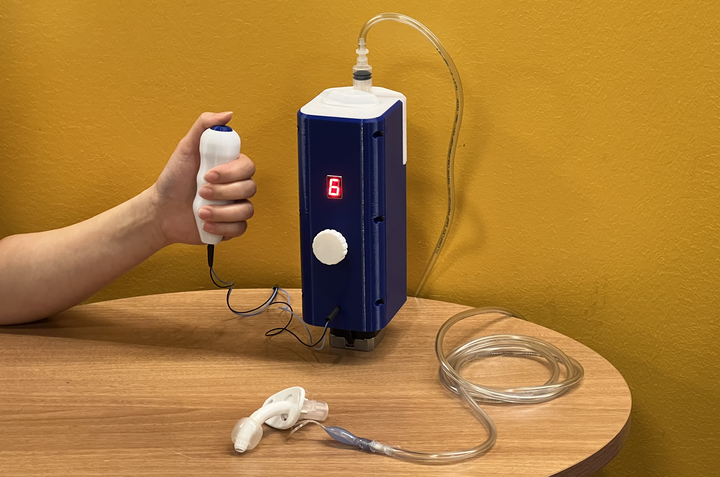TrachTalk - An Independently Operable Tracheostomy Cuff Controller


The TrachTalk is the culmination of our team’s Biomed Junior Design project. Many patients on ventilators have a procedure called a tracheostomy performed which results in an implanted breathing tube connected to an assistive ventilation device. This tube has an attachment commonly called a “cuff” which fully blocks the patient’s airway such that the only air passing into the lungs is directed through the ventilation device. This prevents the patients from speaking (as no air passes over the vocal chords) which has numerous impacts on both patient quality of life and natural language development in pediatric cases.
Our device allows for direct patient control of tracheostomy cuff inflation for the primary purpose of allowing speech. This is achieved via a ‘push-button’ control similar to existing patient-controlled anesthesia devices for pain management. Upon activation, the device adjusts a syringe pump to the appropriate volume (pre-set by physicians), either inflating or deflating the cuff inside of the patient.
The device has been successfully prototyped and achieved our objectives for the course: patient control loop, physician adjustment, and functional hardware. Further development is required to produce a commercially viable product, but such work is achievable and already mapped out. Note that the attached poster showcasing the current state of the project lists two failed verification tests, but that these failures were due to inadequate test design, rather than design failures.
The existing standard of care dictates early weaning from ventilator assistance in part to allow for exercising of speech development. Indeed, many patients recovering from ventilation work with speech pathologists to regain their lost function. The existing method for allowing patients to speak while intubated involves at least 1 nurse, but often another clinician to be present. This not only takes valuable (and expensive) time away from health-care practitioners, but also results in a feeling of helplessness in patients, detracting from their quality of life.
Our device circumvents the need for health-care practitioners and allows the patient to be in direct control of their speech. This increases quality of life for the patients, reduces the demands on staff, and has the potential to yield substantial improvements in pediatric speech development.